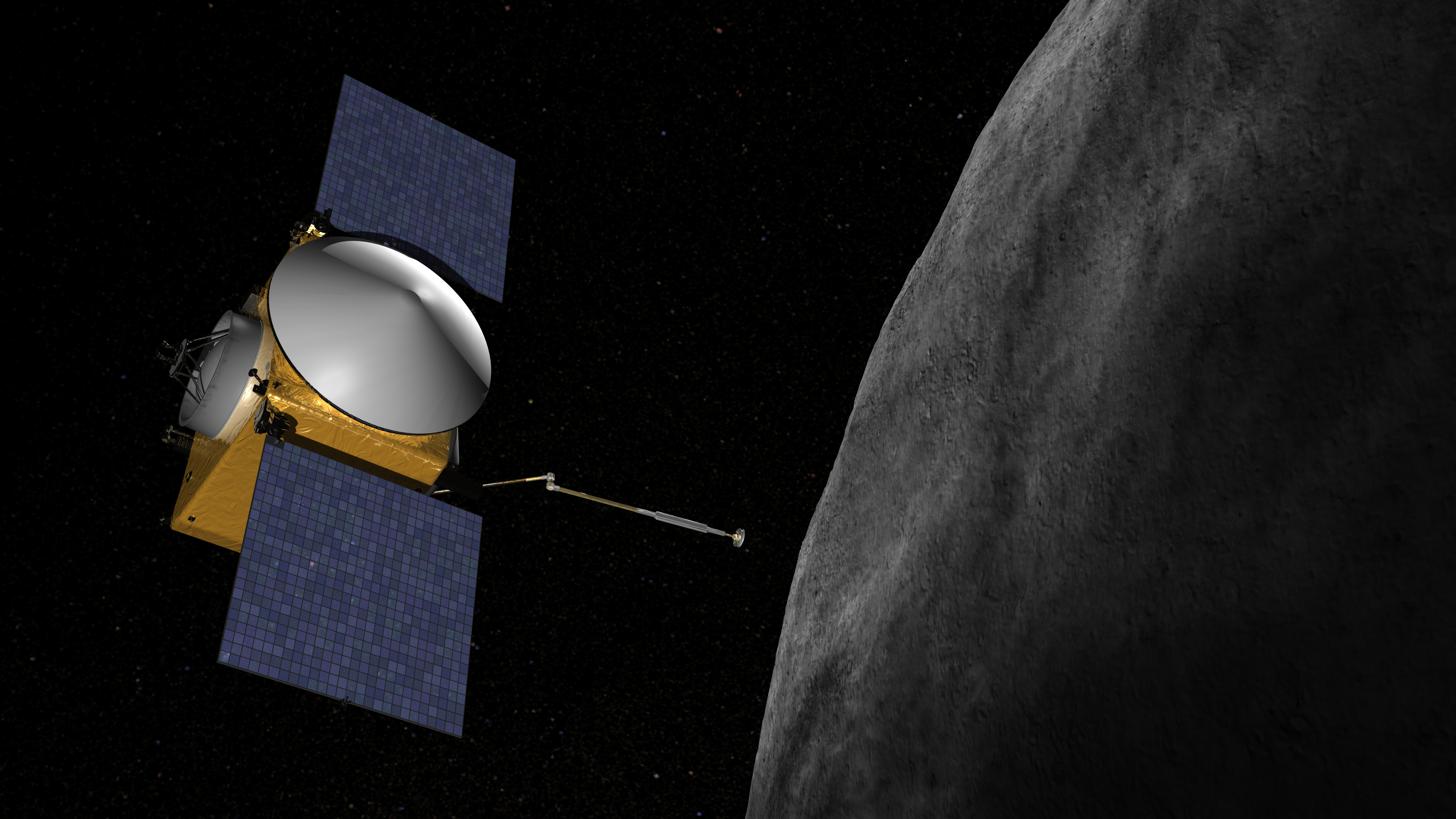NASA Spacecraft Begins Final Approach to Big Asteroid Bennu

A NASA asteroid-sampling probe has entered the homestretch of its deep-space journey.
The OSIRIS-REx spacecraft began its final approach toward the big near-Earth asteroid Bennu on Friday (Aug. 17), NASA officials said. The milestone also marks the official start of OSIRIS-REx's "asteroid operations" mission phase, they added.
"Today, after a nearly two-year journey, I begin Asteroid Operations and my final approach toward Bennu! #AreWeThereYet," NASA officials wrote via the mission's Twitter account, @OSIRISREx, on Friday. [OSIRIS-REx: NASA's Asteroid Sample-Return Mission in Pictures]
But don't get too impatient: OSIRIS-REx is still about 1.2 million miles (2 million kilometers) from Bennu and won't arrive at the 1,650-foot-wide (500 meters) space rock until Dec. 3.
The $800 million OSIRIS-REx mission — whose name is short for Origins, Spectral Interpretation, Resource Identification, Security, Regolith Explorer — launched on Sept. 8, 2016, from Cape Canaveral Air Force Station in Florida.
If all goes according to plan, the probe will study Bennu from orbit for more than two years, gathering a variety of data. OSIRIS-REx will also spiral down to snag a sizable sample of asteroid material before leaving Bennu in March 2021. This cosmic dirt and gravel will come down to Earth in a special return capsule in September 2023.
Scientists around the world will then study the sample, looking for clues about the solar system's early history and evolution. Carbon-rich asteroids such as Bennu are thought to have delivered huge quantities of life's building blocks — complex organic compounds like amino acids — to Earth long ago, along with lots and lots of water. So the Bennu sample could also shed light on the early history of life on our planet, mission team members have said.
Get the Space.com Newsletter
Breaking space news, the latest updates on rocket launches, skywatching events and more!
In addition, Bennu is a potentially dangerous asteroid that might line up Earth in its crosshairs one day. The data OSIRIS-REx gathers from orbit, as well as details of the space rock's composition and structure gleaned from analysis of the returned sample, could therefore help humanity better defend itself against asteroid threats, NASA officials have said.
It's an exciting time to study asteroids. In June, Japan's Hayabusa2 spacecraft arrived in orbit around the near-Earth asteroid Ryugu. Hayabusa2 will also grab samples, which are scheduled to come down to Earth in late 2020.
Follow Mike Wall on Twitter @michaeldwall and Google+. Follow us @Spacedotcom, Facebook orGoogle+. Originally published on Space.com.
Join our Space Forums to keep talking space on the latest missions, night sky and more! And if you have a news tip, correction or comment, let us know at: community@space.com.

Michael Wall is a Senior Space Writer with Space.com and joined the team in 2010. He primarily covers exoplanets, spaceflight and military space, but has been known to dabble in the space art beat. His book about the search for alien life, "Out There," was published on Nov. 13, 2018. Before becoming a science writer, Michael worked as a herpetologist and wildlife biologist. He has a Ph.D. in evolutionary biology from the University of Sydney, Australia, a bachelor's degree from the University of Arizona, and a graduate certificate in science writing from the University of California, Santa Cruz. To find out what his latest project is, you can follow Michael on Twitter.









